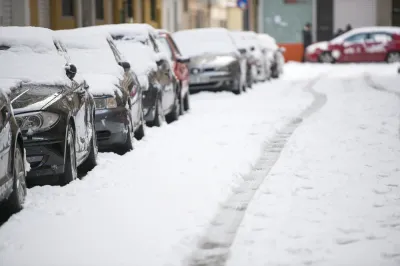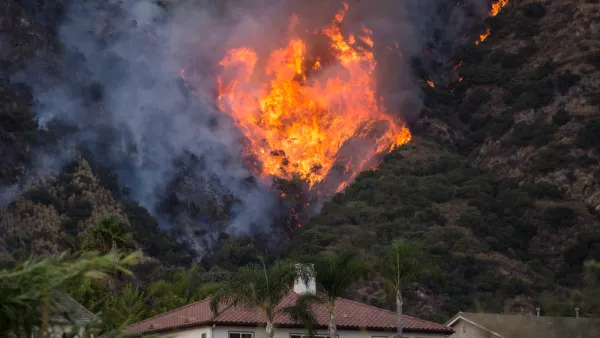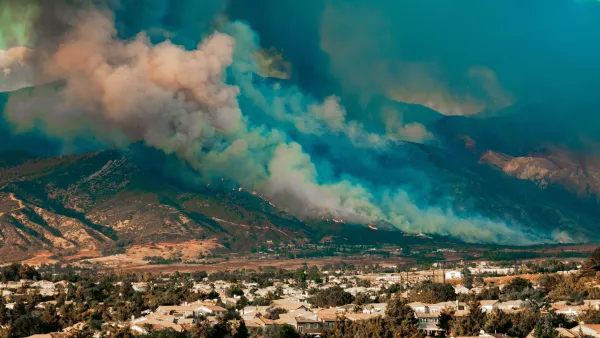After thousands of motorists spent over a day on a snowbound Virginia highway, experts are warning that auto-centric sprawl will worsen the impacts of extreme weather events.

The snowstorm that stranded thousands of drivers in Virginia for over a day has prompted a reevaluation of the auto-centric policies that led so many to become trapped on Interstate 95. "Local advocates say the region’s failure to invest even more broadly in multimodal options than it already has may have set up the area for its current disaster — especially in the most far-flung suburbs, where many of D.C.’s workers live," writes Kea Wilson.
Dan Malouff, a transportation planner based in northern Virginia, points to the potential for breakdown when suburban commuter traffic gets funneled into just one major corridor. According to Malouff, "multimodal networks with multiple modes and paths to choose from are inherently more resilient than putting all of civilization’s eggs in one basket."
Experts warn that a lack of walkability and access to reliable public transit will exacerbate the effects of extreme weather in other ways, too, writes Wilson. "In so much of the DMV suburbs right now, people are finding that they can’t even get groceries the moment that vehicular infrastructure starts to break down, to say nothing of commuting into work," says M. Nolan Gray, author of the forthcoming book, Arbitrary Lines: How Zoning Broke the American City and How to Fix It. Gray recommends promoting more "resilient, mixed-use neighborhoods" that will be better equipped to deal with extreme weather events.
FULL STORY: Virginia Snowstorm Nightmare Highlights Need For Better Transportation Policy

National Parks Layoffs Will Cause Communities to Lose Billions
Thousands of essential park workers were laid off this week, just before the busy spring break season.

Retro-silient?: America’s First “Eco-burb,” The Woodlands Turns 50
A master-planned community north of Houston offers lessons on green infrastructure and resilient design, but falls short of its founder’s lofty affordability and walkability goals.

Delivering for America Plan Will Downgrade Mail Service in at Least 49.5 Percent of Zip Codes
Republican and Democrat lawmakers criticize the plan for its disproportionate negative impact on rural communities.

Test News Post 1
This is a summary

Test News Headline 46
Test for the image on the front page.

Balancing Bombs and Butterflies: How the National Guard Protects a Rare Species
The National Guard at Fort Indiantown Gap uses GIS technology and land management strategies to balance military training with conservation efforts, ensuring the survival of the rare eastern regal fritillary butterfly.
Urban Design for Planners 1: Software Tools
This six-course series explores essential urban design concepts using open source software and equips planners with the tools they need to participate fully in the urban design process.
Planning for Universal Design
Learn the tools for implementing Universal Design in planning regulations.
EMC Planning Group, Inc.
Planetizen
Planetizen
Mpact (formerly Rail~Volution)
Great Falls Development Authority, Inc.
HUDs Office of Policy Development and Research
NYU Wagner Graduate School of Public Service





























